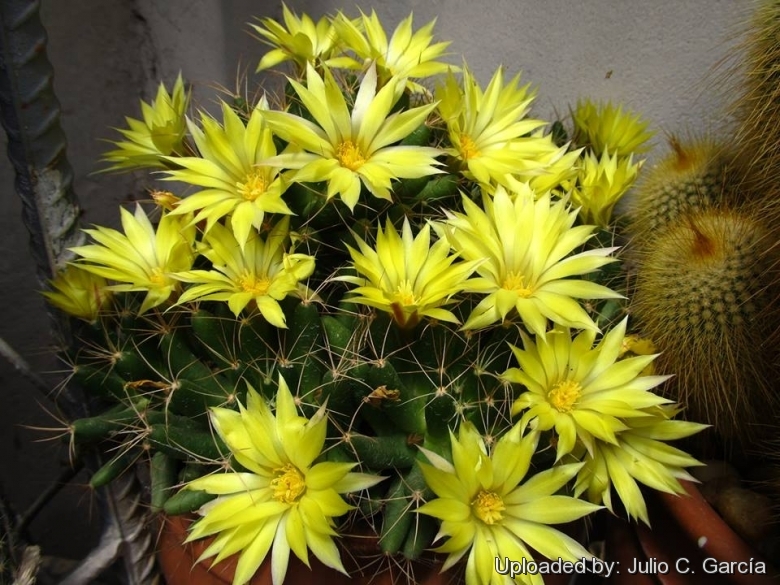
Mammillaria longimamma Photo by: Julio C. García
Origin and Habitat: Guanajuato, Hidalgo, and Querétaro (extent of occurrence ca 15,000 km2). The species is rare across its range, severely fragmented and known from a total of 20 subpopulations.
Altitude range:* Between 1000 and 2400 metres above sea level.
Habitat and Ecology: This cactus is found on limestone and in volcanic soils, under low shrubs and sparse vegetation together whit: Astrophytum ornatumSN|3660]]SN|3660]], Mammillaria wildiiSN|8885]]SN|8885]], Echinofossulocactus anfractuosusSN|6199]]SN|6199]], Selenicereus spinulosusSN|8698]]SN|8698]], Ferocactus glaucescensSN|4300]]SN|1532]], Ferocactus histrixSN|1532]]SN|4300]], Echinocactus platyacanthusSN|10367]]SN|10367]], Brahea dulcisSN|24746]]SN|24746]], Myrtillocactus geometrizansSN|8050]]SN|8050]], Cephalocereus senilisSN|6893]]SN|6893]], Stenocereus dumortieriSN|7942]]SN|7942]], Opuntia imbricataSN|8157]]SN|8157]], Echeveria coccineaSN|13290]]SN|13290]], Tillandsia grandis, Hechtia podanthaSN|19012]]SN|19012]], Agave strictaSN|301]]SN|568]], Agave celsiiSN|568]]SN|301]], Fouquieria purpusii, Bursera morelensis. This cactus is illegally collected in the wild as an ornamental, although this is localized. In some areas this species is trampled by cattle ranching.
Synonyms:
See all synonyms of Mammillaria longimamma
back
Accepted name in llifle Database:Mammillaria longimamma DC.Mém. Mus. Hist. Nat. 17: 113. 1828Synonymy: 24
back
Common Names include:
ENGLISH: Nipple Cactus, Finger Mound, Finger Cactus, Pinapple Cactus
RUSSIAN (Русский): Маммиллярия длиннососочковая
SPANISH (Español): Peyotillo, Peyote
SWEDISH (Svenska): Spenkaktus
Description: At first solitary, but clustering very young and forming dense clusters to 15 cm or more broad. With 10-30(-50) branches.
Stem: Spherical, green, 3-6(12 cm) cm in diameter, up to 10 tall. Without latex.
Tubercles: Very long soft and flaccid 12-25 ? 5-8 mm. the axil is sparsely woolly, without bristles.
Radial spines: About 8 to 10 for 12 to 20 mm long white-yellowish or brown.
Central spines: Usually 1 central spine, to 25 mm long, not hooked or curved, similar to radial spines. No Central spine for the var. uberiformis.
Flowers: Very large for this genus, 4-6 cm long, 4.5-6 cm wide with bright yellow petals in May-July; stigmas yellow.
Fruits: yellowish to green.
Roots: Thick taproots, large in upper portion.
Subspecies, varieties, forms and cultivars of plants belonging to the Mammillaria longimamma group
Bibliography: Major references and further lectures.
1) Robert T. Craig “The Mammillaria handbook: with descriptions, illustrations, and key to the species of the genus Mammillaria of the Cactaceae” E P Publishing, 1945
2) John Pilbeam “Mammillaria The Cactus File Handbook” Cirio Pub. Services, 01/Dec/1999Edward Anderson “The Cactus family” Timber Press, Incorporated, 2001
3) James Cullen, Sabina G. Knees, H. Suzanne Cubey "The European Garden Flora Flowering Plants: A Manual for the Identification of Plants Cultivated in Europe, Both Out-of-Doors and Under Glass" Cambridge University Press, 11/Aug/2011
4) David R Hunt; Nigel P Taylor; Graham Charles; International Cactaceae Systematics Group. "The New Cactus Lexicon" dh books, 2006
5) Gómez-Hinostrosa, C., Sánchez , E., Guadalupe Martínez, J. & Bárcenas Luna, R. 2013. Mammillaria longimamma. The IUCN Red List of Threatened Species. Version 2014.2. <www.iucnredlist.org>. Downloaded on 15 August 2014
6) Ulises Guzmán, Salvador Arias, Patricia Dávila, “Catálogo de cactáceas mexicanas” Universidad Nacional Autónoma de México, Mexico 2003, p.114.
7) Urs Eggli, Leonard E. Newton: “Etymological Dictionary of Succulent Plant Names” Birkhäuser 2004
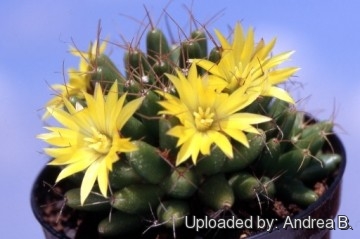 Mammillaria longimamma Photo by: Andrea B.
Mammillaria longimamma Photo by: Andrea B.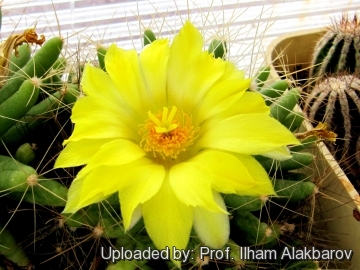 Mammillaria longimamma Photo by: Prof. Ilham Alakbarov
Mammillaria longimamma Photo by: Prof. Ilham Alakbarov Mammillaria longimamma Photo by: Valentino Vallicelli
Mammillaria longimamma Photo by: Valentino Vallicelli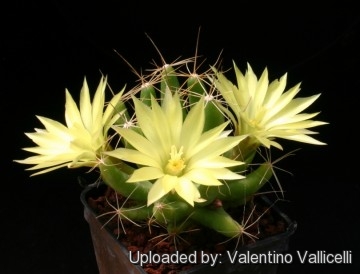 Mammillaria longimamma Photo by: Valentino Vallicelli
Mammillaria longimamma Photo by: Valentino Vallicelli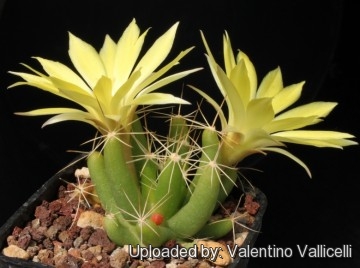 - The lemon yellow flowers are very large for this genus (6 cm in diameter ) and are produced in abundance in summer. Photo by: Valentino Vallicelli
- The lemon yellow flowers are very large for this genus (6 cm in diameter ) and are produced in abundance in summer. Photo by: Valentino Vallicelli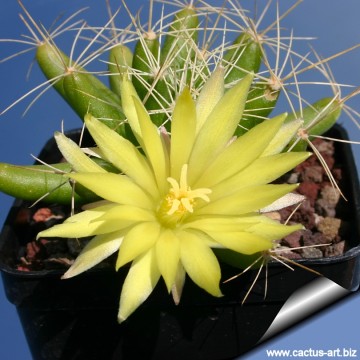 Mammillaria longimamma Photo by: Cactus Art
Mammillaria longimamma Photo by: Cactus Art Mammillaria longimamma Photo by: Cactus Art
Mammillaria longimamma Photo by: Cactus Art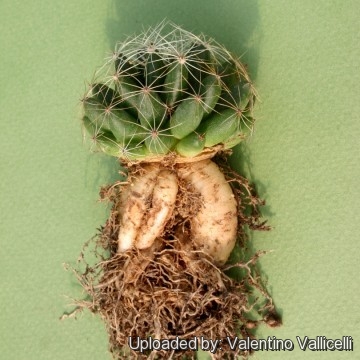 Mammillaria longimamma Photo by: Valentino Vallicelli
Mammillaria longimamma Photo by: Valentino VallicelliCultivation and Propagation: An easy species that will form large clumps with age. Mammillaria longimammaSN|11261]]SN|11261]] has a fairly large tap root, and should be kept in a deep pot with a very draining mineral substrate. Watering during the active growing season (spring and summer); this will encourage steady growth, and prevent the large tubercles from becoming flabby. But be careful with watering, which all thick rooted species require (rot sensitive). Keep dry during the winter rest, when the plant may pull near the surface of the potting mix. Fertilize every 2 weeks with diluted high potassium fertilizer when the plant is in bud. Need light shade to shade.
Propagation: Seeds, offsets, tubercles (Tubercles can be removed from the plant, let to dry a day or 2, and planted)
Your Photos
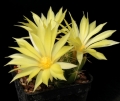
by Valentino Vallicelli

by Valentino Vallicelli
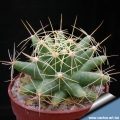
by Cactus Art





















